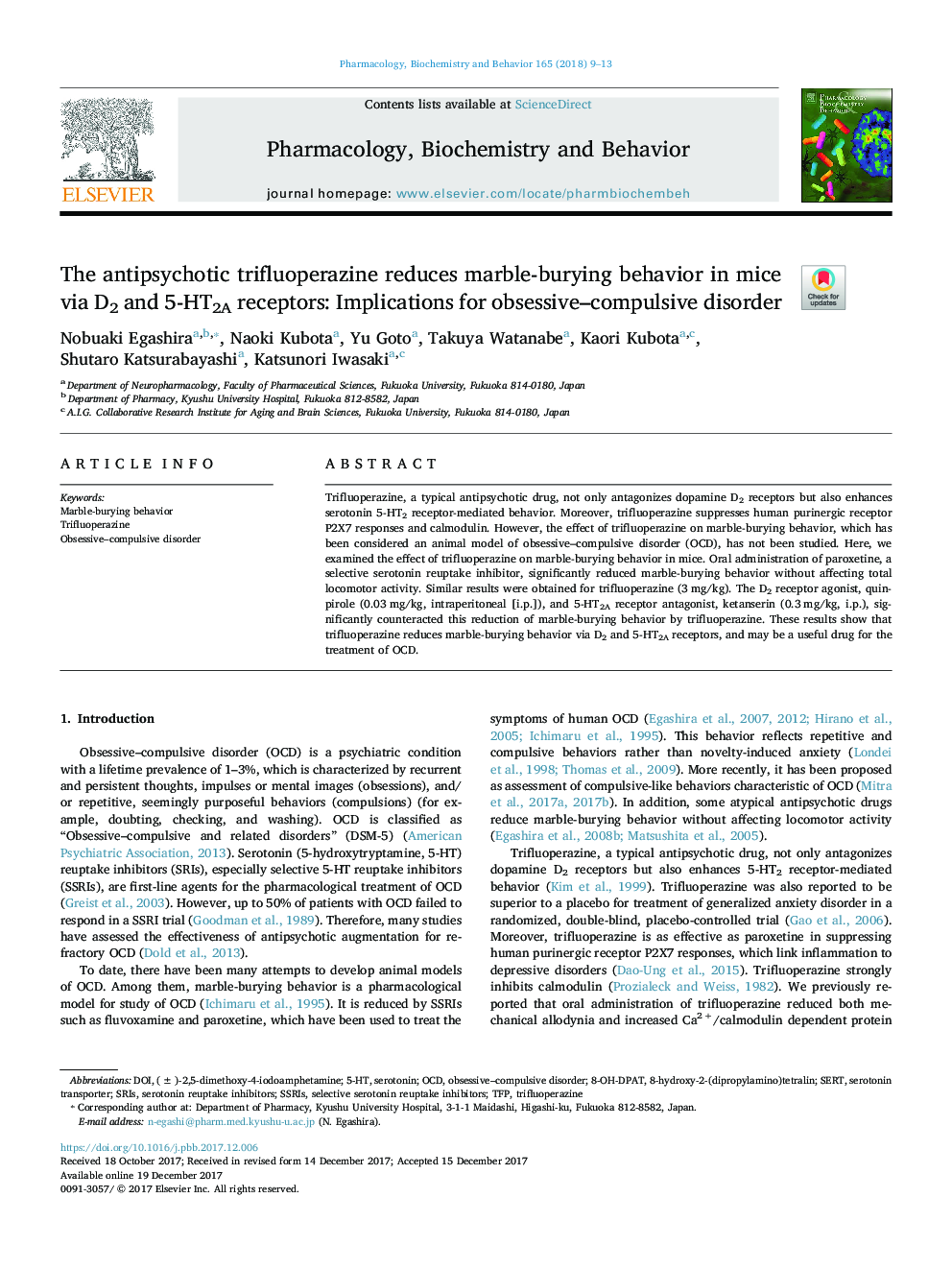| Article ID | Journal | Published Year | Pages | File Type |
|---|---|---|---|---|
| 8350026 | Pharmacology Biochemistry and Behavior | 2018 | 5 Pages |
Abstract
Trifluoperazine, a typical antipsychotic drug, not only antagonizes dopamine D2 receptors but also enhances serotonin 5-HT2 receptor-mediated behavior. Moreover, trifluoperazine suppresses human purinergic receptor P2X7 responses and calmodulin. However, the effect of trifluoperazine on marble-burying behavior, which has been considered an animal model of obsessive-compulsive disorder (OCD), has not been studied. Here, we examined the effect of trifluoperazine on marble-burying behavior in mice. Oral administration of paroxetine, a selective serotonin reuptake inhibitor, significantly reduced marble-burying behavior without affecting total locomotor activity. Similar results were obtained for trifluoperazine (3Â mg/kg). The D2 receptor agonist, quinpirole (0.03Â mg/kg, intraperitoneal [i.p.]), and 5-HT2A receptor antagonist, ketanserin (0.3Â mg/kg, i.p.), significantly counteracted this reduction of marble-burying behavior by trifluoperazine. These results show that trifluoperazine reduces marble-burying behavior via D2 and 5-HT2A receptors, and may be a useful drug for the treatment of OCD.
Keywords
Related Topics
Life Sciences
Biochemistry, Genetics and Molecular Biology
Biochemistry
Authors
Nobuaki Egashira, Naoki Kubota, Yu Goto, Takuya Watanabe, Kaori Kubota, Shutaro Katsurabayashi, Katsunori Iwasaki,
